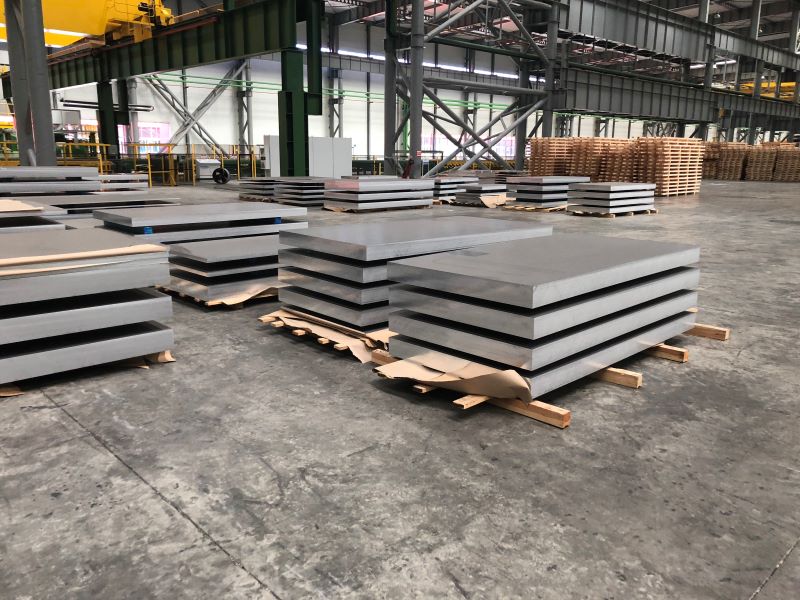As a leading supplier of aluminum products and precision machining services, we recognize the importance of selecting the right material for demanding applications. Among high-performance aluminum alloys, 2019 aluminum plate stands out as a premium choice engineered for extreme environments. This article delves into the metallurgical composition, mechanical characteristics, and diverse applications of 2019 aluminum plate, offering insights to help engineers and procurement specialists make informed decisions.
Chemical Composition: The Science Behind 2019 Aluminum
2019 aluminum is a wrought alloy belonging to the 2000 series (aluminum-copper family). Its composition is precisely calibrated to achieve an optimal balance between strength, machinability, and thermal stability. Key alloying elements include:
Copper (Cu): 5.2%~6.8% Enhances strength and precipitation-hardening response.
Magnesium (Mg): 0.25%~0.7% Improves strain-hardening capability and thermal stability.
Manganese (Mn): 0.4%~1.0% Controls grain structure and recrystallization behavior.
Iron (Fe): ≤0.30% Managed as an impurity to maintain ductility.
Silicon (icon (Si): ≤0.25% Controlled to avoid detrimental intermetallic phases.
Zirconium (Zr) and Titanium (Ti): Trace amounts for grain refinement and improved hot-working characteristics.
The alloy is typically supplied in T3, T6, or T8 tempers, indicating solution heat treatment, quenching, and artificial aging to maximize mechanical properties mechanical properties.
Mechanical and Physical Properties: A High-Performance Profile
2019 aluminum plate exhibits an exceptional strength-to-weight ratio, outperforming many standard alloys in rigidity and damage tolerance. Typical mechanical properties (for T851 temper) include:
Ultimate Tensile Strength (UTS): ≥62 ksi (427MPa)
Tensile Yield Strength (TYS): ≥42 ksi (290MPa)
Elongation at Break: ≥10% (in 2 inches)
Shear Strength: ∼34 ksi (234MPa)
Fatigue Strength: Excellent under cyclical loading conditions.
Its physical attributes further underscore its suitability for advanced engineering:
Density: 0.101 lb/in³ (2.80 g/cm³)
Melting Range: 935℉~1180°F (502℃~638°C)
Thermal Conductivity: 121 W/m·K
Electrical Conductivity: ∼34% IACS
Notably, 2019 demonstrates good machinability, rated at 80% relative to the reference standard for 2011-T3 alloy. It also retains dimensional stability across a wide temperature range, resisting creep deformation under sustained thermo-mechanical stresses.
Application: 2019 aluminum plate excellence field
Thanks to its robust performance profile, 2019 aluminum plate is specified in several high-stakes industries:
1. Aerospace & Defense: Used in wing ribs, fuselage frames, and landing gear components due to its high fracture toughness and resistance to crack propagation.
2. Automotive Racing: Ideal for suspension linkages, chassis reinforcements, and engine mounts where weight reduction and vibration damping are critical.
3. Military Vehicles: Applied in armored vehicle structures and portable bridging systems requiring ballistic integrity and shock absorption.
4. Precision Tooling: Suitable for jigs, fixtures, and mold bases requiring long-term geometrical accuracy.
5. Thermal Management Systems: Its balanced thermal expansion coefficient suits heat sinks and exchanger plates in avionics cooling units.
Why Source 2019 Aluminum Plate from Us?
We combine rigorous quality assurance (certified to AMS 4160 and ASTM B209) with just-in-time delivery and custom CNC machining capabilities. Whether you need prototype-grade cuts or full-scale production runs, our technical team ensures compliance with your specifications.
Upgrade your project with 2019 aluminum plate’s unmatched capabilities. Request a free quotation and material certification data today. Let’s engineer your success together.
Post time: Nov-10-2025






